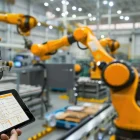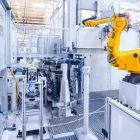A gas analyzer is essential for understanding the composition of gases around us. It is crucial in various industries and applications, ensuring safety, efficiency, and environmental compliance. Gas analyzers are complicated machines, but this guide will show you everything you need to know to use and choose one safely.
What Are Gas Analyzers?
Gas analyzers determine the amount of certain gases in a mixture. They come in various forms, each designed to detect different gases and suit different environments. Gas analyzers provide critical data, from monitoring air quality to optimizing industrial processes.
Components and Systems
Fuji Electric Philippines provides a range of components and systems relevant to gas analysis setups. Their offerings contribute to comprehensive and efficient gas analysis processes:
Instrumentation
Fuji Electric offers precise measurement devices that form the core of any reliable gas analysis system. These instruments provide accurate readings of gas concentrations, ensuring data integrity for critical decision-making. They include sensors and transmitters that can be integrated into larger systems.
Low Voltage Variable Speed Drives (LV VSD)
LV VSDs efficiently control motor speed in applications such as fans and pumps in gas handling systems. Optimizing motor speed helps reduce energy consumption and improve process control.
Medium Voltage Variable Speed Drives (MV VSD)
MV VSDs provide the same benefits as LV VSDs for higher-power applications. They are designed for larger motors in heavy industrial settings, making them useful for applications requiring more robust power control.
Programmable Logic Controllers (PLC)
PLCs automate and control complex gas analysis processes. They can manage multiple sensors and control valves and provide feedback loops to maintain optimal conditions. Automation reduces the work that needs to be done by hand and makes things run more smoothly overall.
Power Conditioner Systems (PCS)
PCS ensures a stable power supply to sensitive gas analysis equipment. This protects the equipment from voltage fluctuations and power surges, which can affect accuracy and reliability. A clean power supply is essential for consistent performance.
Human Machine Interface (HMI)
The HMI provides operators with an intuitive way to monitor and control gas analysis systems. This includes visualizing data, setting parameters, and receiving alerts. A well-designed HMI enhances usability and improves operator efficiency.
Types of Gas Analyzers
Different types of gas analyzers use unique methods to measure gas concentrations. These are some common types:
Electrochemical Gas Analyzers
These analyzers measure the concentration of a specific gas by measuring the electric current produced by a chemical reaction. They are often used for measuring oxygen, carbon monoxide, and nitrogen dioxide. Electrochemical sensors offer good sensitivity and are suitable for portable applications.
Infrared (IR) Gas Analyzers
These analyzers detect gases that absorb infrared light. Each gas absorbs IR light at specific wavelengths, allowing for selective measurement. They’re commonly used for measuring carbon dioxide, carbon monoxide, and hydrocarbons in emissions monitoring and process control.
Thermal Conductivity Gas Analyzers
These analyzers measure the thermal conductivity of a gas mixture. They help detect gases with significantly different thermal conductivities, such as hydrogen or helium, than the surrounding air. They are also used to monitor hydrogen purity in industrial processes.
Zirconia Gas Analyzers
Primarily used to measure oxygen concentration, especially in combustion processes. They operate at high temperatures and provide a fast and accurate measurement of oxygen levels, enabling efficient combustion control and reduced emissions.
Mass Spectrometers
These highly sensitive analyzers can identify a wide range of gases by measuring their mass-to-charge ratio. They are used in research, environmental monitoring, and industrial applications requiring precise gas identification.
Laser-Based Gas Analyzers
These analyzers use lasers to measure gas concentrations precisely. Tools like Tunable Diode Laser Absorption Spectroscopy (TDLAS) offer high sensitivity and selectivity. They’re used in leak detection, process monitoring, and atmospheric research.
Applications of Gas Analyzers
Gas analyzers find applications in a wide array of fields. These include:
Industrial Process Control
They help optimize chemical reactions and manufacturing processes by monitoring real-time gas concentrations. This enables precise control of process parameters, improving product quality and efficiency.
Environmental Monitoring
Gas analyzers monitor air and water quality, ensuring compliance with environmental regulations. They measure pollutants such as nitrogen oxides, sulfur dioxide, and particulate matter.
Combustion Efficiency Analysis
They help optimize fuel combustion in boilers and engines, reducing emissions and fuel consumption. By monitoring oxygen and carbon monoxide levels, operators can fine-tune combustion parameters for maximum efficiency.
Medical Applications
They monitor a patient’s breathing, ensuring proper ventilation and oxygenation. Capnography, for example, measures carbon dioxide levels in exhaled breath.
Automotive Exhaust Analysis
Measurements of vehicle emissions are used to ensure vehicles meet emission standards and develop cleaner and more efficient engines.
Key Considerations When Choosing a Gas Analyzer
Selecting the right gas analyzer depends on your specific needs. Consider these factors:
Target Gases
What gases do you need to measure? Different analyzers are designed for various gases.
Accuracy and Precision Requirements
How accurate does the measurement need to be? The required accuracy will influence the type of analyzer you need.
Operating Environment
Will it be used in a harsh or controlled environment? Consider temperature, humidity, and potential exposure to corrosive substances.
Maintenance Requirements
How much maintenance is required to keep it running smoothly? Some analyzers require more frequent calibration and maintenance than others.
Cost
What is your budget? Consider both the initial cost and the ongoing cost of maintenance and operation.
Pro tip: Clearly define your measurement objectives before purchasing a gas analyzer. This will help you narrow down your choices and choose the best analyzer. Document the specific gases you need to measure, the required accuracy, and the operating environment.
FAQs About a Gas Analyzer
What is a gas analysis used for?
Gas analysis is used for various purposes, including monitoring industrial processes, ensuring environmental compliance, optimizing combustion efficiency, medical diagnostics, and analyzing automotive exhaust. It helps identify and quantify the components of a gas mixture.
How accurate is a gas detector?
The accuracy of a gas detector varies depending on the type of sensor and the manufacturer’s specifications. Generally, industrial-grade gas detectors offer high accuracy, often within a few percent. Calibration and regular maintenance are crucial for maintaining accuracy.
Can ultrasonic sensors detect gas?
Ultrasonic sensors typically detect the presence of gas by measuring changes in the speed of sound or attenuation of ultrasonic waves caused by the gas.
How do you test for gas at home?
Gas leak detectors, found at most hardware stores, are usually used to check for gas leaks at home. Soapy water can also be applied to pipe connections. If there’s a leak, bubbles will form. For carbon monoxide, use a CO detector. If you think there is a gas leak, leave the building and call your gas company or emergency services.
How do you find unknown gas?
Finding an unknown gas requires specialized equipment and expertise. Gas chromatography-mass spectrometry (GC-MS) is a common technique for identifying unknown gases by separating and analyzing their molecular components. Trained professionals typically perform this process in a laboratory setting.
Pro-Tip: Regular calibration is key to maintaining the accuracy of your gas analyzer. Follow the manufacturer’s recommendations for calibration frequency and procedures. Keep a detailed log of calibration results to track performance over time.
Gas analyzers are indispensable tools for a wide range of applications. You need to carefully think about your needs and available options when choosing the right gas analyzer. You can ensure accurate and reliable gas measurements with the right analyzer and proper maintenance.
About Fuji Electric Sales Philippines, Inc.
Bringing global technology to local industries, Fuji Electric Sales Philippines, Inc. represents Japan-based Fuji Electric Co., Ltd. in the country. The company offers sales, support, and promotion of products focused on power electronics, automation, and energy efficiency.
Want to upgrade your systems with a gas analyzer? Contact Fuji Electric today:
Rickson Manalo
Assistant Sales Manager
0917-115 6102









